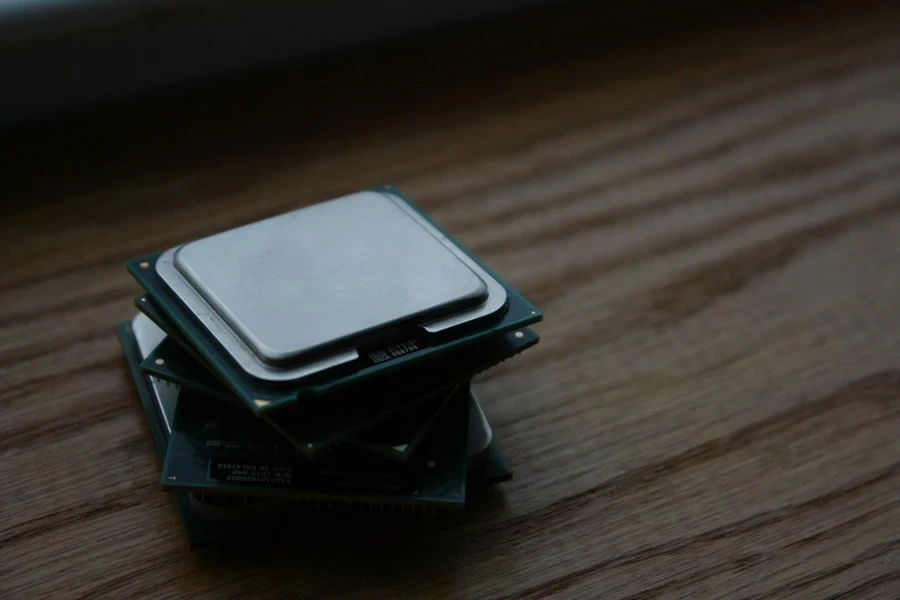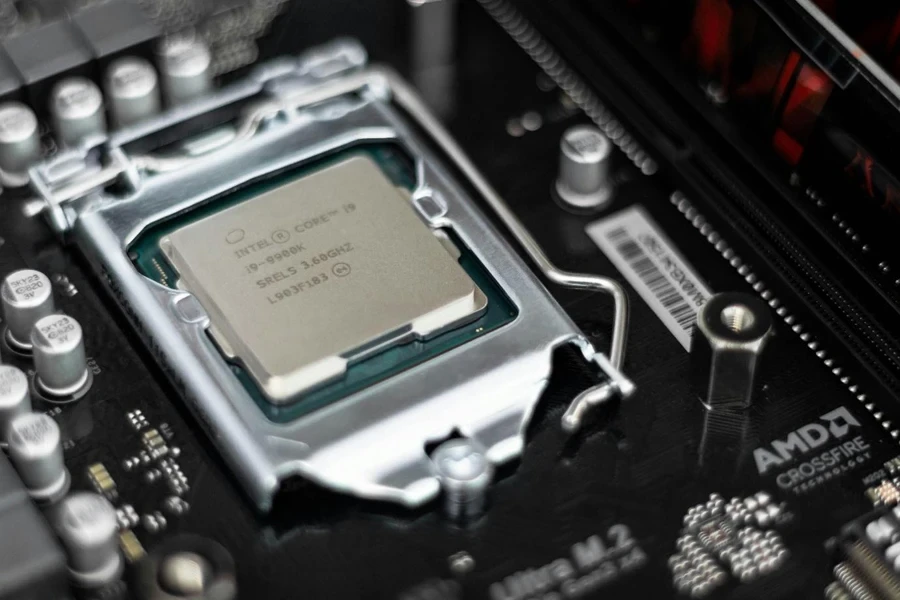Mini PCs have become essential in the tech industry, combining compact design with powerful capabilities, making them ideal for various professional applications. As market dynamics shift, understanding the latest trends and innovations is crucial for businesses seeking efficient computing solutions.
This article provides insights into the expanding mini PC market, key technological advancements, and top models driving industry trends. By staying informed, professional buyers can make strategic decisions that align with evolving demands. The continued rise of mini PCs underscores their growing impact on the future of computing.
Table of Contents
● Market overview
● Key technology and design innovations
● Top-selling models driving market trends
● Conclusion
Market overview

Growth statistics
The mini PC market is experiencing robust growth, with the global market size reaching USD 22.7 billion in 2023 and projected to expand at a CAGR of over 5% from 2024 to 2032. This growth is fueled by the increasing demand for compact and energy-efficient computing solutions across various industries, including digital signage, home entertainment, and business workstations. As businesses and consumers seek space-saving alternatives without compromising performance, mini PCs are becoming the preferred choice for many applications.
Regional dynamics
The Asia Pacific region is emerging as a key driver of this market expansion, with a CAGR of 7% expected from 2024 to 2032. Countries such as China, Japan, and South Korea are leading the adoption of mini PCs, driven by their technological advancements and growing demand for compact computing solutions. Meanwhile, North America and Europe are also significant contributors, with strong market adoption in sectors like retail, education, and industrial automation. These regions are benefiting from increasing awareness of the advantages of mini PCs, such as their portability, versatility, and cost-effectiveness.
Key players and market shares
Major companies like Acer, Intel, and Apple continue to dominate the mini PC market, leveraging their technological expertise and strong brand presence. Acer holds a significant market share, offering a diverse range of mini PCs tailored to different consumer needs, from basic computing tasks to high-end multimedia applications.
Intel plays a crucial role through its processor technologies, powering a large segment of mini PCs with its Core series processors that offer enhanced performance and energy efficiency. Apple’s Mac mini, particularly with the introduction of the M2 chip, has also gained substantial market traction, appealing to creative professionals and businesses alike. These companies are continuously innovating, ensuring their leadership in the evolving mini PC landscape.
Key technology and design innovations

Advances in processing power
The evolution of processing power in mini PCs is marked by the adoption of cutting-edge CPUs like Intel’s 13th Gen Core processors and AMD’s Ryzen 7000 series. For instance, the Intel Core i7-1360P boasts a hybrid architecture with 4 Performance-cores and 8 Efficiency-cores, allowing for seamless multitasking and enhanced power efficiency. This architecture is particularly advantageous for handling multi-threaded applications and optimizing performance for both light and intensive tasks.
Similarly, AMD’s Ryzen 9 7940HS integrates 8 cores and 16 threads with a base clock of 4.0 GHz and a boost clock up to 5.2 GHz, delivering exceptional processing speed and computational power. This makes mini PCs equipped with these processors capable of running high-demand applications like 3D rendering and real-time analytics without sacrificing efficiency.
Storage and connectivity innovations
Mini PCs have also seen significant improvements in storage and connectivity, which have expanded their capabilities and versatility. The move towards NVMe PCIe 4.0 SSDs allows for blistering read and write speeds, often exceeding 7,000 MB/s, which dramatically reduces load times and accelerates data-intensive operations. These SSDs also support advanced features like thermal throttling and DRAM cache, ensuring sustained performance even under heavy workloads.
On the connectivity front, the inclusion of Thunderbolt 4 ports offers data transfer rates up to 40 Gbps, supporting dual 4K displays or a single 8K display, making mini PCs suitable for high-resolution video editing and other professional applications. Additionally, USB 3.2 Gen 2×2 ports now deliver up to 20 Gbps bandwidth, allowing for faster peripheral connectivity, which is crucial for environments where multiple external devices are used simultaneously.
Modular and upgradeable designs

Despite their small size, some mini PCs are designed with modularity in mind, enabling users to customize and upgrade their systems as needed. For example, certain models offer SODIMM slots for memory expansion, supporting up to 64GB of DDR5 RAM at speeds of 4800 MHz or higher. This is particularly beneficial for users who require extensive multitasking or run memory-intensive applications.
Storage upgrade options are equally robust, with dual M.2 slots supporting both SATA and NVMe SSDs, providing flexibility in balancing cost and performance. Some mini PCs also feature tool-less access to these components, making upgrades straightforward and user-friendly, which is a significant advantage in fast-paced business environments where downtime needs to be minimized.
Energy efficiency and cooling solutions
Energy efficiency and thermal management are critical in mini PC designs to maintain optimal performance while preventing overheating. Modern mini PCs incorporate advanced cooling technologies such as vapor chamber cooling systems and heat pipes combined with dual-fan configurations that effectively dissipate heat even in the most compact chassis. These cooling solutions are often paired with intelligent fan control algorithms that adjust fan speed dynamically based on thermal loads, ensuring a balance between cooling efficiency and noise levels.
Moreover, many mini PCs are designed to operate within a TDP (Thermal Design Power) range of 15 to 35 watts, making them not only power-efficient but also suitable for environments where energy consumption and heat output are critical factors, such as in small office setups or embedded systems.
Top-selling models driving market trends

Apple Mac mini M2
The Apple Mac mini M2 stands out as the top-selling mini PC, renowned for its exceptional processing power and compact design. Powered by the Apple M2 chip, which features an 8-core CPU and up to a 10-core GPU, the Mac mini delivers outstanding performance across various professional applications, from graphic design to software development. This model supports up to 24GB of unified memory and 2TB of SSD storage, ensuring seamless multitasking and rapid data access. Its small footprint makes it a popular choice among creative professionals who need powerful computing capabilities without occupying much desk space. The Mac mini is particularly favored in industries like video production and audio engineering, where high processing power in a compact form is crucial.
Beelink U59
The Beelink U59 is a budget-friendly mini PC that offers a balanced mix of performance and affordability. It is equipped with an Intel Celeron N5095 processor, featuring 4 cores and a base clock speed of 2.0 GHz, making it suitable for everyday tasks such as web browsing, office applications, and media streaming. Despite its modest specs, the U59 includes 16GB of RAM and 512GB of SSD storage, which can be upgraded to meet more demanding requirements. Its small size and VESA mount compatibility allow it to be easily attached to the back of a monitor, making it an ideal choice for small offices or home workstations where space is limited. The U59’s affordability, combined with its upgrade potential, makes it a popular option for users looking for a cost-effective mini PC.

Minisforum UM790 Pro
The Minisforum UM790 Pro is highly regarded among video editors and gamers, thanks to its powerful AMD Ryzen 9 7940HS processor and Radeon 780M integrated graphics. This mini PC is designed to handle intensive tasks such as 4K video editing and AAA gaming with ease, boasting 32GB of DDR5 RAM (expandable to 64GB) and 1TB of PCIe 4.0 SSD storage. Its dual HDMI 2.1 and USB4 ports provide extensive connectivity options, supporting multiple high-resolution displays and fast data transfers. The UM790 Pro also features an advanced cooling system with heat pipes and fans, ensuring optimal performance even under heavy loads. This model bridges the gap between traditional desktops and portable gaming rigs, making it a versatile choice for both professional content creators and gaming enthusiasts.
Minisforum Neptune HX100G
The Minisforum Neptune HX100G is a mini PC that caters specifically to gamers, offering desktop-level performance in a compact form. Powered by an AMD Ryzen 7 7840HS processor and Radeon RX 6650M discrete graphics, it delivers exceptional gaming performance, capable of running modern AAA titles at high settings. The HX100G supports up to 64GB of DDR5 RAM and includes dual PCIe 4.0 SSD slots, providing ample storage and fast data access. Its ability to support dual 8K displays through HDMI and USB4 ports makes it a powerful tool not just for gaming but also for content creation and immersive multimedia experiences. The efficient cooling system and expandable storage options further enhance its appeal, positioning it as a top choice for gamers seeking a high-performance mini PC.
Apple Mac Studio
For professionals requiring unparalleled computing power, the Apple Mac Studio is the go-to mini PC. Equipped with the M2 Ultra chip, it features a 24-core CPU and up to a 76-core GPU, making it capable of handling the most demanding creative tasks, including 3D rendering, video editing, and machine learning. The Mac Studio supports up to 128GB of unified memory and offers 8TB of SSD storage, providing both speed and capacity for extensive projects. Despite its compact size, the Mac Studio is engineered to deliver workstation-level performance, with an advanced cooling system that maintains peak efficiency under heavy workloads. Its versatility and power make it an ideal solution for creative professionals in fields such as film production, animation, and graphic design, where performance cannot be compromised.
Conclusion
As mini PCs advance in power, efficiency, and versatility, they are reshaping the landscape of computing by offering robust solutions in increasingly compact forms. These innovations are driving their widespread adoption across various industries, establishing mini PCs as essential tools in both professional and personal environments. As the market continues to grow, mini PCs will play a pivotal role in meeting the evolving demands of modern computing.



